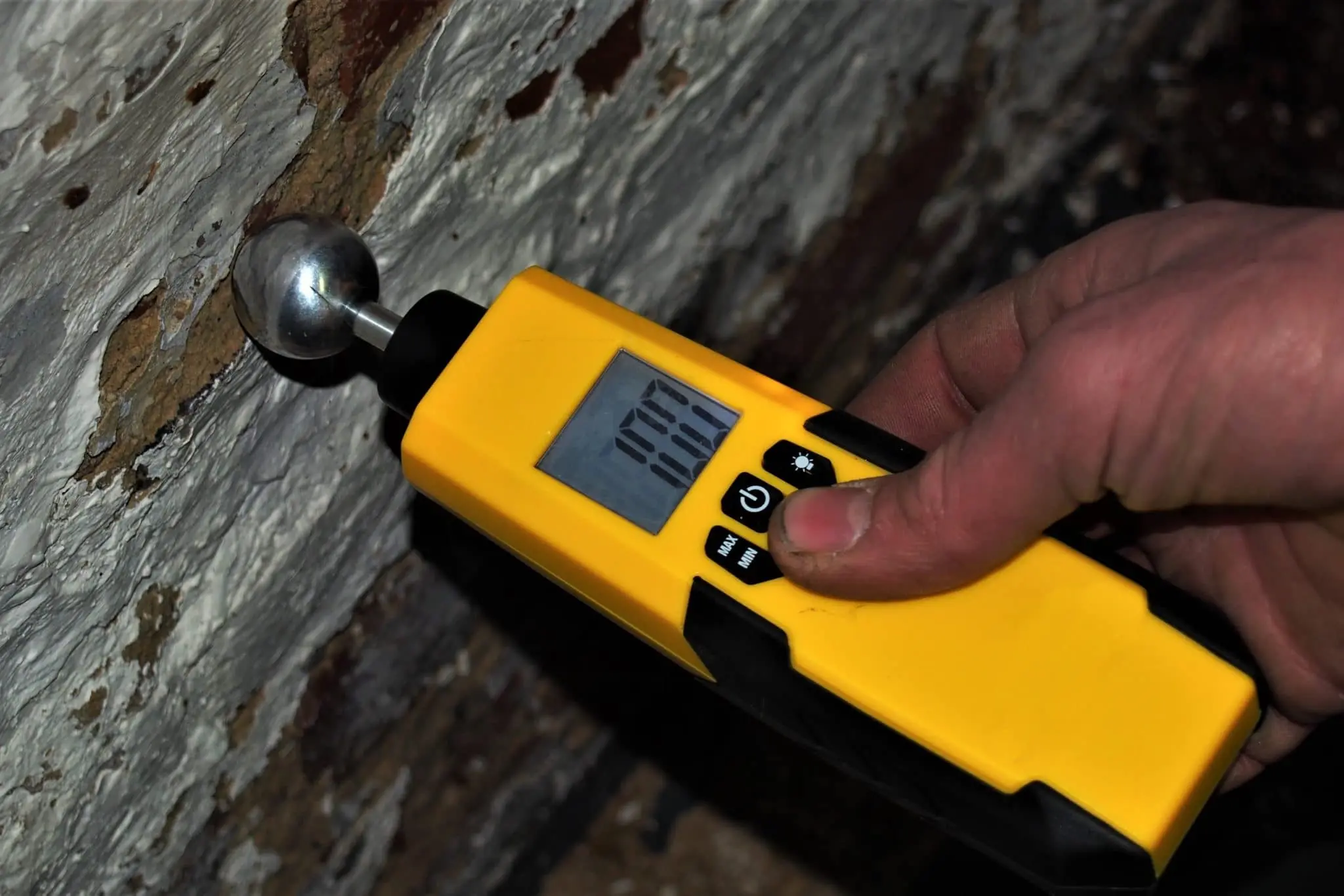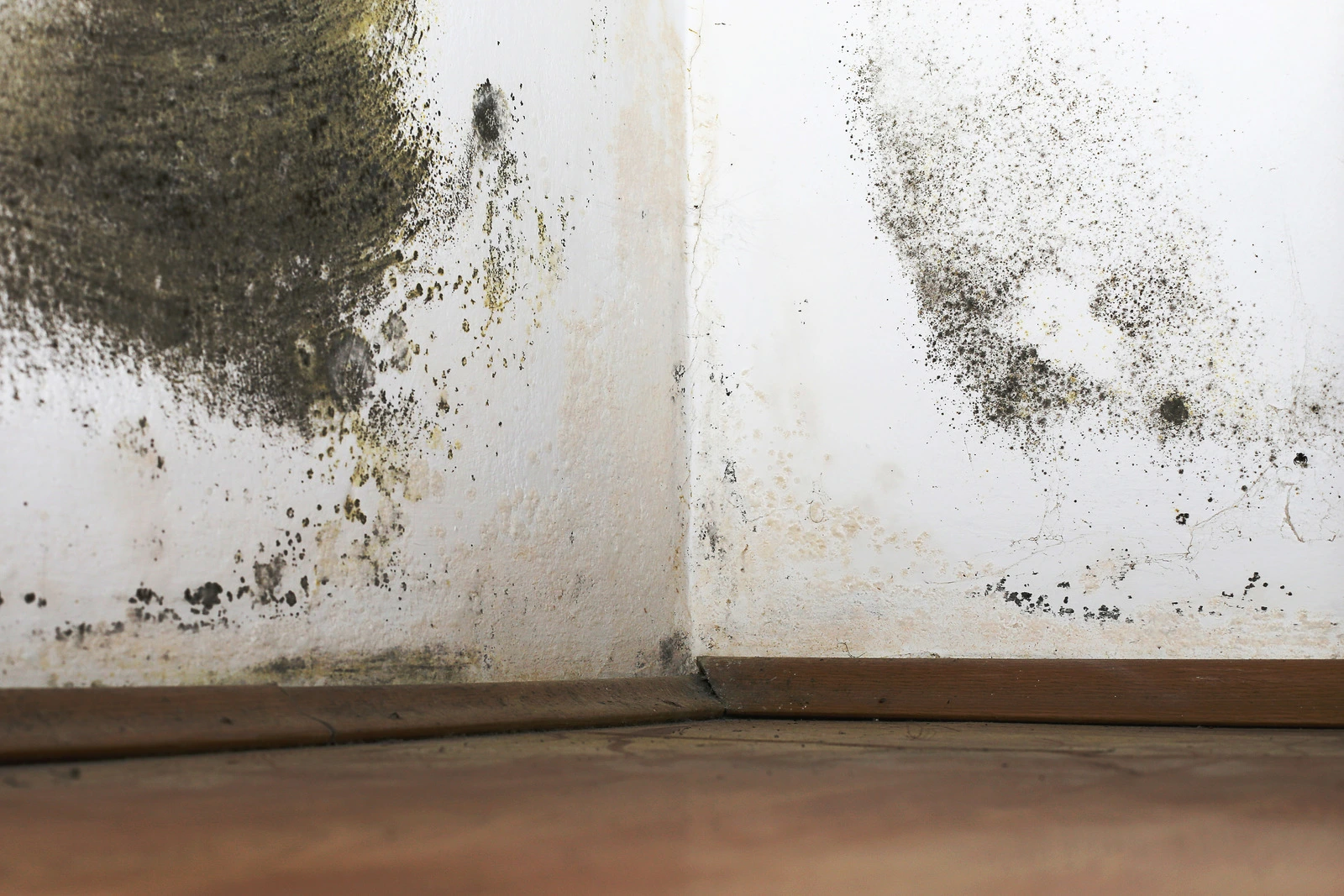Why Dampness Inspection is Critical
In Hyderabad's humid climate, dampness can cause serious structural damage and health issues. Early detection is key to preventing costly repairs and protecting your family.
What We Check For

Warning Signs of Dampness
Recognize these indicators that suggest you need a dampness inspection
Visible Water Stains
Brown or yellow stains on walls, ceilings, or floors indicating water infiltration.
Mold Growth
Black, green, or white patches of mold or mildew on surfaces.
Musty Odors
Persistent damp, musty smells that indicate hidden moisture problems.
High Humidity
Consistently high humidity levels that promote mold growth and structural damage.
Health Risks of Dampness
Prolonged exposure to dampness and mold can cause serious health problems, especially for children, elderly, and those with respiratory conditions.

Our Dampness Inspection Process
Advanced techniques and equipment for accurate moisture detection
Visual Assessment
Thorough visual inspection for signs of moisture damage
Moisture Testing
Advanced moisture meters and thermal imaging
Source Identification
Locate the root cause of moisture problems
Recommendations
Detailed remediation and prevention plan
Prevention Tips
Proactive measures to prevent dampness in your home
Proper Ventilation
Ensure adequate airflow in bathrooms, kitchens, and basements
Regular Maintenance
Fix leaks promptly and maintain gutters and drainage systems
Moisture Control
Use dehumidifiers and ensure proper waterproofing
Regular Inspections
Schedule periodic dampness inspections, especially during monsoon season
Frequently Asked Questions
Common questions about dampness inspection services
When is the best time to conduct a dampness inspection?
The best time is during or just after the monsoon season (June-September) when moisture levels are highest. However, dampness issues can occur year-round, so inspection is recommended whenever you notice warning signs.
Can you detect hidden moisture behind walls?
Yes, we use advanced moisture meters and thermal imaging cameras that can detect moisture behind walls, under floors, and in other hidden areas without causing damage to your property.
How accurate are your moisture detection methods?
Our professional-grade equipment provides highly accurate readings. We use multiple detection methods including pin-type meters, pinless meters, and thermal imaging to ensure comprehensive and accurate assessment.
What's the difference between dampness and condensation?
Dampness typically comes from external water sources (leaks, rising damp), while condensation forms when warm, humid air meets cold surfaces. We identify the source to recommend appropriate solutions.
Can dampness issues be completely eliminated?
Most dampness issues can be effectively resolved with proper remediation. The success depends on identifying and addressing the root cause, implementing appropriate solutions, and maintaining proper ventilation.
How much does dampness remediation typically cost?
Remediation costs vary widely based on the extent and cause of dampness. Minor issues might cost ₹10,000-50,000, while major structural dampness can cost ₹1-5 lakhs. Early detection helps minimize costs.
Is dampness inspection necessary for new buildings?
Yes, even new buildings can have dampness issues due to construction defects, poor waterproofing, or inadequate curing. Early detection prevents long-term damage and health issues.
How often should I get dampness inspection done?
We recommend annual inspections, especially before and after monsoon seasons. Properties with previous dampness issues should be inspected more frequently until the problem is fully resolved.
Dampness Inspection Pricing
Protect your health and property with professional dampness detection
Protect Your Home from Dampness
Don't let moisture problems escalate. Schedule your dampness inspection today.
